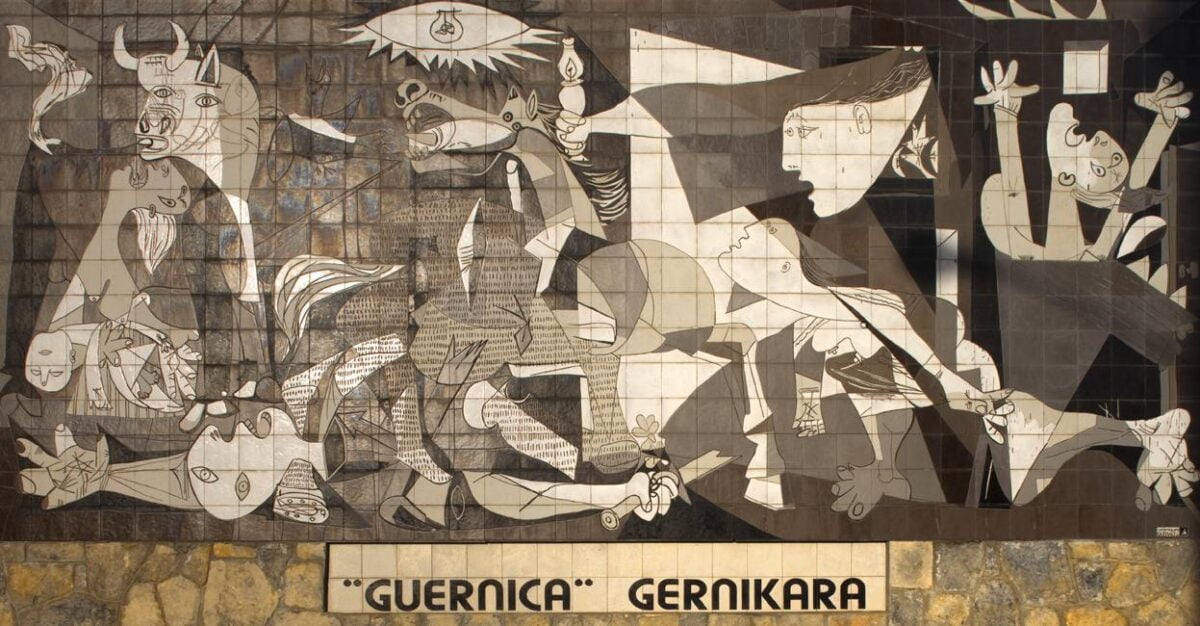On 25 October 1881, one of the most famous artists of the 20th century was born in Malaga. His work changed the perception of art and was the beginning of the great avant-garde movement in art. Who is he referring to? Pablo Picasso!
Picasso was born into a family of draughtsman; it was his father who discovered his artistic talent. Picasso is most associated with Cubism and painting, such as his painting The Virgins of Avignon, in which he depicted geometrically shaped women with faces reminiscent of African masks. However, the artist was involved in many fields of art: sculpture, ceramics, printmaking and… poetry!
Blue period, circus performers and minotaurs
It is said that Pablo Picasso never painted as a child; his earliest surviving work, from when he was eight years old, is the painting Picador, done in oil.
The first period in Picasso’s painting oeuvre is known as the blue period. The subjects of the paintings were scenes from the lives of poor people, rendered in blue, cold, melancholic colours. Another fascination of the painter was the life of circus performers. Picasso painted jugglers, harlequins and circus performers preparing for shows. These series of paintings are classified as part of the Pink period.

Where did cubism come from?
Picasso was initially educated in Spain and later went to the city where artists from all over the world flocked to – Paris. It was here that the young Spaniard became acquainted with the art of Paul Cézanne, the precursor of Impressionism and Cubism. Fascinated by his search for a new style, simplification, geometrisation, Picasso began his search for a new form of expression. It was not only Cézanne who influenced Picasso’s turn towards geometrisation. The increasingly popular art of Iberian and African peoples at the time, particularly sculptures and masks, also fascinated the artist. He himself began sculpting masks similar to African effigies. These were simplified forms whose purpose was no longer to convey reality or likeness. This had previously been absent from European art!
A new chapter in the history of art
Cubism revolutionised thinking about art and its relationship with nature. Picasso developed the principles of Cubism together with Georges Braque. The terms ‘Cubism’ and ‘Cubists’ ( from the French cube , meaning ‘cube’, ‘cube’), were used maliciously to ridicule Braque and Picasso. However, they quickly caught on, losing their negative meaning.
Cubism is not only a type of painting, it is a change in artistic language – for example, analytical cubism consisted of constructing the space of a painting in such a way that multiple aspects of an object could be shown on the canvas simultaneously, showing it from several sides at once – from a bird’s eye view and a frog’s perspective.
Paintings, sculptures, corrida
In 1906, Picasso painted a portrait of the poet Gertrude Stein and prepared the first sketches for a painting of the Virgins of Avignon. A year later, Picasso met Braque and made three sculptures in wood and stone. His most significant sculptures, however, were created after 1929. Picasso created openwork metal constructions, figural sculptures with surrealist characteristics and compositions of so-called ‘ready-made things’, e.g: Head of a woman, Man with a lamb or Goat.
Guernica – one of Picasso’s most famous paintings was created as a protest after the events that took place on 26 April 1937. The town of Guernica y Luna in the autonomous Basque republic was bombed. News of this atrocity quickly spread across Europe. As a gesture of defiance, Picasso painted a shocking painting, measuring 3.49×7.77 metres. ‘ He expressed the war as a corrida defiled, a corrida in which one learned to kill without risk, to die without fame, to win without joy, ‘ wrote Cubist scholar Mieczysław Porębski.
 Source: Commons.Wikimedia.org
Source: Commons.Wikimedia.org
Picasso Museum in Malaga
The collection housed in the Malaga museum consists of more than 230 works. Among the collected works, one can see works representing all stages in his art, examples of portraits, sculptures, ceramics, paintings showing the Minotaur or warriors.
Pepe Karmel, curator of the exhibition at the Malaga museum, says this about Picasso’s art: In just a few years, Picasso moved from the drama and tenderness of the blue and rose periods to the cerebral experimentation of Cubism. After the First World War, he invented a new, modern form of classicism. In the 1920s and 1930s he wandered back and forth among Cubism, Classicism and Surrealism. After the Second World War, he invented new styles for which art historians still have not found names. He is best known as a painter, but he was also the greatest sculptor of the 20th century. (See www.museopicassomalaga.org).
 Source: Commons.Wikimedia.org
Source: Commons.Wikimedia.org
Trip to Malaga
Malaga – one of the most beautiful cities in Andalusia, not far from the luxury resort of Marbella – entices tourists from all over the world with its diversity, beautiful architecture, excellent Andalusian cuisine, authentic flamenco, and coffee served in many ways. When looking for sun and tranquillity on the Costa del Sol, it’s well worth a visit to this extraordinary town to get a better idea of the culture of the region where Pablo Picasso came from. Come to the Costa del Sol and find out why it is the best place to live on Earth!

